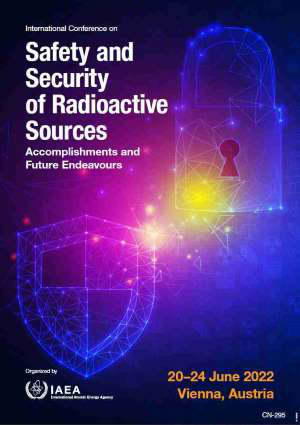Speaker
Description
This work aims to solve the problem inherent in the current ionizing radiation monitoring practices, which is unsafe, labor intensive and lack of valuable information to allow decision making at the operational level. The IoD solution is expected to automate the monitoring at these facilities, which allow rapid decision making and reliable communication to avoid radioactive leakage, which may pose a risk towards nationwide disaster. The prototype involves several research concepts; start from the use of the latest wireless technology to relay sensor data from the Gieger Muller (GM) sensor integrated on the drone. The drone also will collect several data from the sensor nodes that measure the atmospheric and structure data surround the nuclear facilities. The drone will relay the real-time sensors data into an online dashboard for monitoring and automate decision making based on several safety levels. The prototype will be developed using two novel concepts: a stand-alone wireless charging station for the drone and an energy-efficient wireless transmission technique. Both research novelty expected to prolong the lifetime and reliability of the drone power supply for future unmanned IoD deployment. This proposal is in collaboration with two partners. The first is Atomic Energy Licensing Board (AELB), an agency that will help with the licensing and the use of radioactive materials, thus responsible in coordinating nationwide nuclear security measures. The second collaborator is from Aerodyne Group, a drone-based industry that will contribute in terms of drone development and later push towards potential commercialization of the prototype. The prototype is expected to revolutionize the radiation monitoring towards safe and reliable practices via the Internet of Drone technology. The Internet of Drones (IoD) has started to emerge in various other applications. However, there is a lack of push towards the IoD solution in the area of radiation monitoring, especially in Malaysia and the rest other Asia region. The conventional radiation detection system requires on-site physical inspection and detection, which poses a risk and impact from radioactive exposure towards the inspector or regulator. The accurate and fast unmanned detector will allow monitoring of hard to reach and high-risk site (i.e. land borders, nuclear facilities) conducted in a more efficient and effective manner. The radiation exposure to the workers inside the buildings of nuclear facilities like research reactor and medical cyclotron during a routine inspection is a critical issue. In addition, contamination level measurements for a wide area using conventional survey meters is time-consuming, and locally existing radiation hotspots or leakage is overlooked. Therefore, there is a distinct need for a device that can automatically measure the radioactive contamination for a wide area quickly and easily. The combination of an ionizing radiation detector and remote equipment is a useful way to remotely measure the radioactive contamination under high-dose-rate environments. Recently, small unmanned helicopters with multiple rotors known as drones or multicopters have been attracting attention worldwide. Owing to the development of automatic control technology, it is possible to control drone flights relatively easily. In addition, drones are compact and inexpensive. A drone system with directional radiation detectors can be used to measure detailed radiation distributions in narrow areas, which have been difficult to measure with conventional monitoring. Applications: Land border control, major public event, nuclear facilities, research reactor, nuclear medicine facilities, environmental monitoring in mining areas. etc.
| Country OR Intl. Organization | MALAYSIA |
|---|

